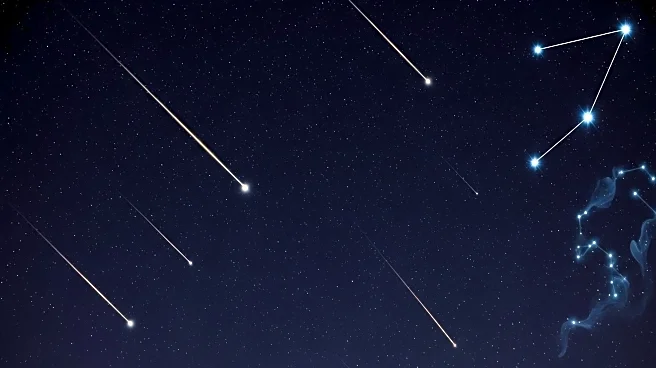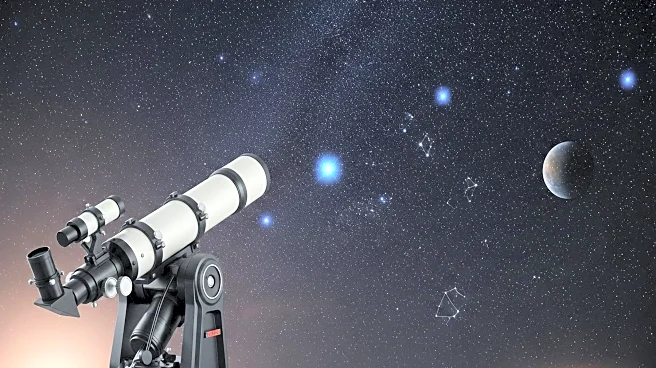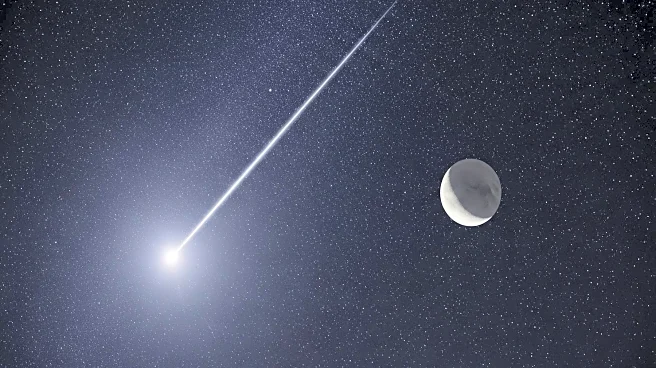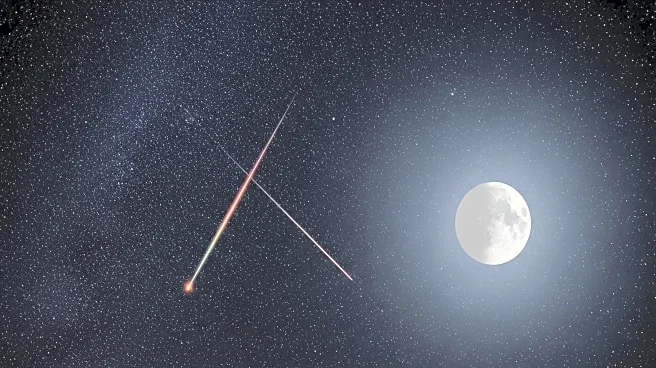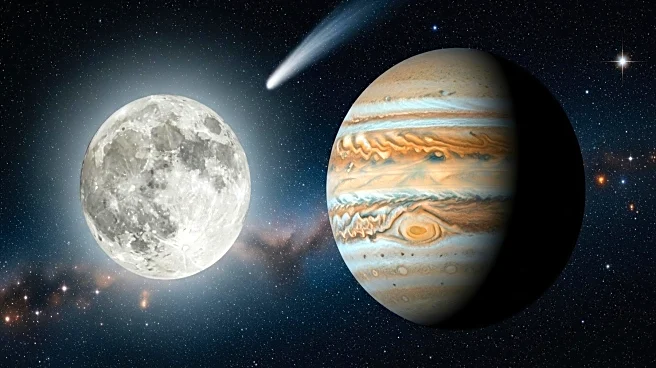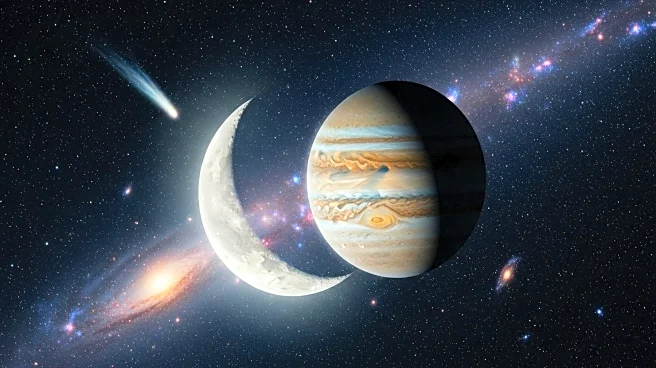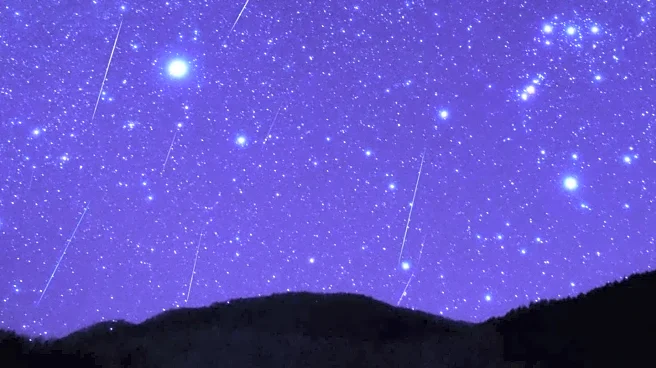What's Happening?
A recent guide to astronomical events provides insights into observing the night sky, including the center of the Milky Way galaxy and upcoming meteor showers. The guide explains how to locate the galactic center near the constellation Sagittarius, despite its invisibility due to gas and dust. It also highlights the Orionid meteor shower, which peaks on October 21, and provides tips for observing Saturn, Jupiter, and Venus. The guide includes information on Comet Lemmon, expected to be one of the brightest comets of the year, and the distant star Rho Cassiopeiae, visible to the naked eye.
Why It's Important?
This guide serves as a valuable resource for amateur astronomers and enthusiasts, offering detailed information on celestial events and how to observe them. Understanding the positioning and visibility of stars, planets, and comets enhances public engagement with astronomy and science education. The guide's emphasis on upcoming events like the Orionid meteor shower and Comet Lemmon encourages public interest in space exploration and observation.
What's Next?
As the Orionid meteor shower approaches its peak, enthusiasts are encouraged to prepare for optimal viewing conditions. The visibility of Comet Lemmon will continue to increase, providing opportunities for observation and study. The guide suggests ongoing observation of celestial bodies, fostering a deeper appreciation for astronomy and potentially inspiring future scientific endeavors.
Beyond the Headlines
The guide's focus on astronomical phenomena highlights the cultural and educational significance of stargazing. It underscores the importance of preserving dark skies for observation and raises awareness about light pollution's impact on astronomical research. The guide also reflects the growing interest in space science and exploration, contributing to broader discussions on humanity's place in the universe.

